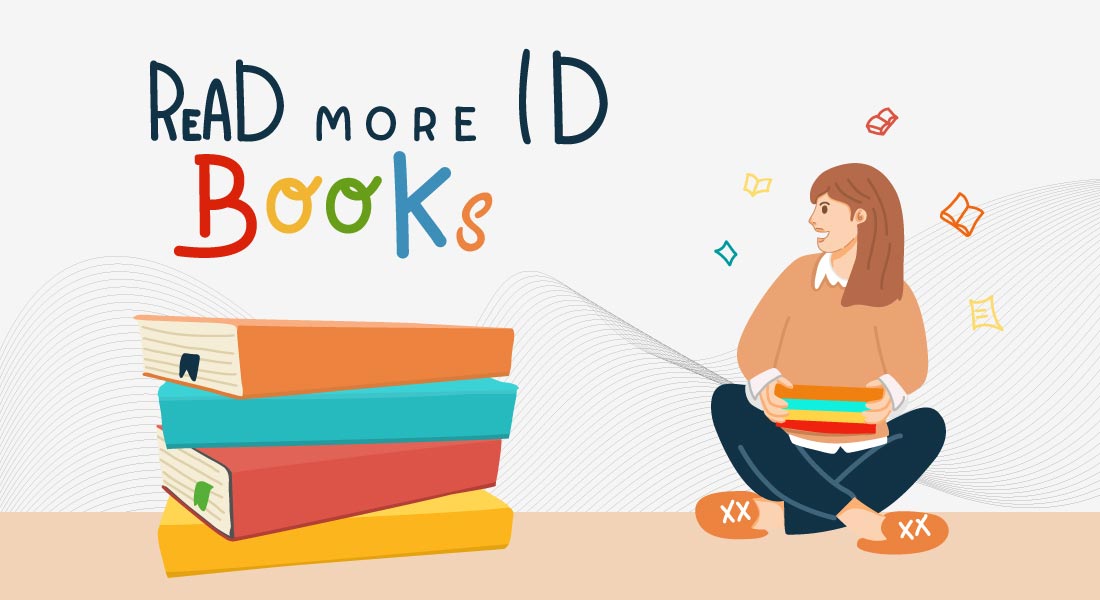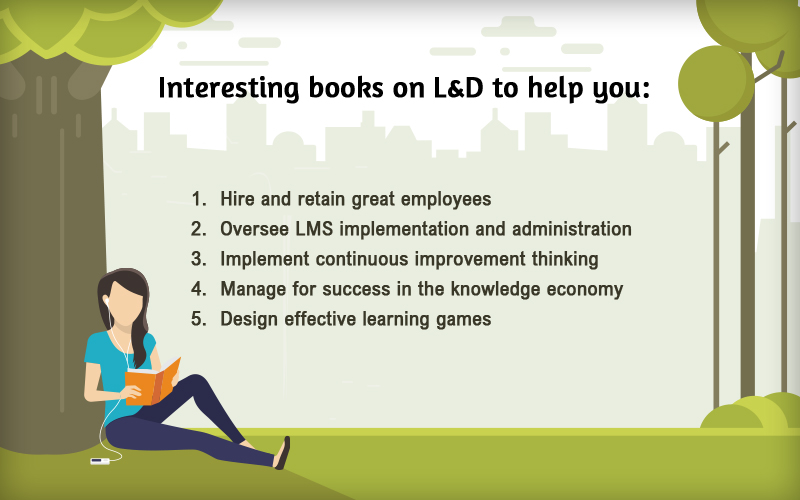To Have & to Hold: The Top 10 eLearning Books of the Decade 2011 to 2020 (Plus 2 More!)

Before the pandemic hit the world, eLearning was already the second most popular training method, accounting for more than 30% of training budgets. And with the social distancing and work from home culture that came along with COVID-19, its usage has and will continue to become more widespread. And for those Instructional Designers or Training Managers in organizations that haven’t really implemented eLearning in a big way, now’s the time to do it.
So, here’s a list of must-read books on Instructional Design that’ll hold your hand and take you through the process. And if you are already well into eLearning in your organization, these books will add to your existing skills and understanding.
Top 10 eLearning Books of the Decade + Two
- The eLearning Designer’s Handbook by Tim Slade
- Become an eLearning Champion by Dr. R. K. Prasad
- Microlearning: Short and Sweet by Karl M. Kapp
- Map It by Cathy Moore
- Play to Learn by Sharon Boller, Karl Kapp
- Michael Allen’s Guide to E-Learning
- e-Learning and the Science of Instruction by Ruth Clark and Richard Mayer
- Design for How People Learn by Dirksen Julie
- More Than Blended Learning by Clive Shepherd
- The Accidental Instructional Designer by Cammy Bean
- Revolutionize Learning & Development (L&D) by Clark Quinn
- e-Learning by Design by William Horton
I wanted to only include ten books in the list, but really couldn’t resist adding two more, my bad. So, now you have a round dozen top eLearning books of the decade. They include new books and revised and republished (in this decade) newer editions of older books.
Which phase of eLearning implementation are you in?
The list starts with the most recent books and goes back through the years.
So, settle down with a hot cup of coffee (or cocoa!), sit back, and enjoy!
Top 10 eLearning Books of the Decade + Two Unveiled
The eLearning Designer’s Handbook: A Practical Guide to the eLearning Development Process for New eLearning Designers by Tim Slade (September 2020)
This book will take you through the entire eLearning design and development process, giving answers to a lot of ‘how to’ questions like: How do you make your project a success? How do you gather learning content from SMEs? How do you create a storyboard? How do you develop a prototype? When and where should you include interactivity? And lots more!
For more insights, check this link.
Become an eLearning Champion: A Practical Guide for E-learning Implementation by Dr. R. K. Prasad (December 2019)
One of my personal favorites, this is a real ‘go-to’ book for Training Managers and Instructional Designers which has everything you need to know about eLearning – from effective instructional design techniques and how to apply them, the tools and LMS, from implementing eLearning for maximum effectiveness to evaluating the results, and much more. If you want a wealth of 2 decades of experience distilled into a very readable guide, this is the book for you!
Microlearning: Short and Sweet by Karl M. Kapp (September 2019)
This user-friendly book is a must-have for instructional designers – both the most- to the least-informed about microlearning. It answers commonly asked questions such as – Is Microlearning a text message or a video? Does it need to be shorter than five minutes? Do you just “chunk” a longer course into smaller pieces? And guides readers through how, when, and why to design, develop, implement, and evaluate microlearning.
Get this gem of a book here!
Map It: The hands-on guide to strategic training design by Cathy Moore (September 2017)
Using humor and lots of examples, Map It walks you through action mapping and helps you create training projects that make a real difference. From helping the client identify the cause of the performance problem and determine if training is the solution, through creating challenging activities that learners want to complete, to choosing the best format for each activity and providing them at the right time, this book deals with all this and more.
For more insights, visit this link.
Play to Learn: Everything You Need to Know About Designing Effective Learning Games by Sharon Boller, Karl Kapp (April 2017)
This interesting book bridges the gap between instructional design and game design and in the process, helps grow your game design skills. It will show you how to link game design to your business needs and learning objectives, test your prototype and refine your design, and deploy your game to motivated and excited learners. So don’t just play around. Use ‘Play to Learn’ as your guide.
Michael Allen’s Guide to E-Learning: Building Interactive, Fun, and Effective Learning Programs for Any Company Second Edition (October 2016)
This book, another one of my favorites, presents in a very engaging fashion, best practices to create interactive, fun, and effective online learning programs. The updated edition also discusses the technology and tools that facilitate the implementation of the strategies, guidelines, and techniques it presents. So, what are you waiting for?
e-Learning and the Science of Instruction by Ruth Clark and Richard Mayer (March 2016)
This is the ultimate handbook for evidence-based e-learning design, providing research-based guidelines on how best to present content with text, graphics, and audio. It also discusses ways to improve learning through personalization techniques, coherence, animations, and evidence-based game design, and how to leverage worked examples, practice, online collaboration, and learner control to optimize learning.
Explore more about the book here.
Design for How People Learn (Voices That Matter) by Dirksen Julie (December 2015)
Discover how to use the key principles behind learning, memory, and attention to create materials that enable your learners to gain and retain knowledge and skills. This book will teach you how to leverage the fundamental concepts of instructional design to improve your own learning and to engage your audience. It also includes techniques for using social media for learning as well as best practices for evaluating learning.
Explore this comprehensive guide here.
More Than Blended Learning by Clive Shepherd (Jan 2015)
The ‘More Than’ approach takes blended solutions a step further to ensure the blend results in application to real-world tasks. Using storytelling, case studies, and compelling analysis, Clive Shepherd, one of the world’s leading experts on the design of adult learning interventions, describes a simple design process that can be applied successfully to transform adult learning.
Explore this gem of a book here.
The Accidental Instructional Designer by Cammy Bean (June 2014)
This book gives a fresh, modern take on instructional design for e-learning – from instructional design to creating scenarios, building interactivity, and working with SMEs – it has it all. It’s perfect for the learning professional just getting started with e-learning and the more experienced one looking for new ideas. And best of all, it shows how you can go from being an accidental instructional designer to an intentional one!
Revolutionize Learning & Development (L&D): Performance and Innovation Strategy for the Information Age by Clark Quinn (April 2014)
In today’s tech-savvy world, old methods are no longer relevant, and in most cases, simply don’t work. This book shows how to leverage new understandings and technologies to breathe new life into your programs and make a meaningful impact on your organization.
From implementing the most effective strategies to making changes in strategy, and the importance of research-based frameworks, performance support, and informal learning, this book has it all!
Visit this link for more insights.
e-Learning by Design by William Horton (October 2011)
This bestselling book offers a comprehensive look at the concepts and processes of developing, creating, and implementing a successful e-learning program. If you want to learn how to build customized eLearning programs from scratch — from instructional design principles to developing meaningful activities; creating and administering online assessments; designing learning games and simulations; and implementing an individualized program, then get this book asap.
Parting Thoughts
There you have it – my top 12 books on everything related to eLearning! Before you take off to explore the books, I have a gift for you – a short eBook that distils the best practices of eLearning design and development and timely hacks for successful implementation.





